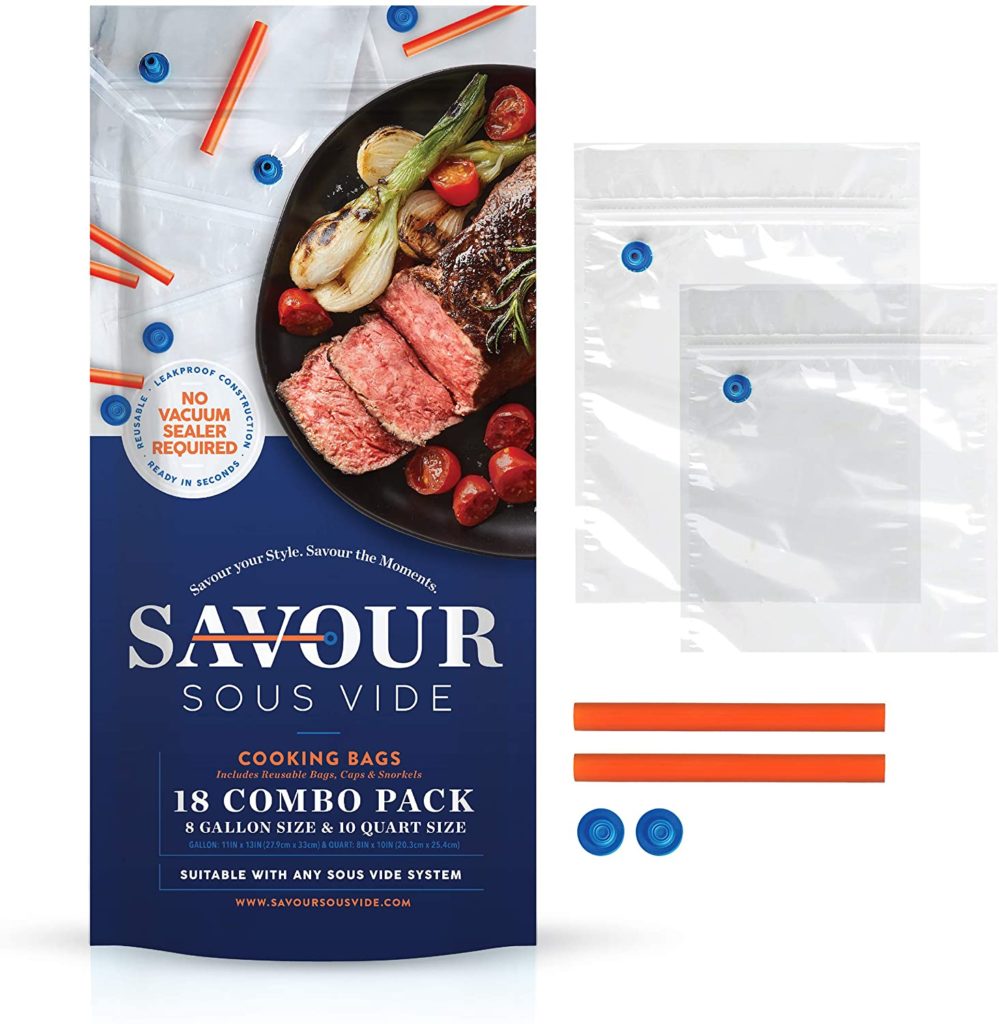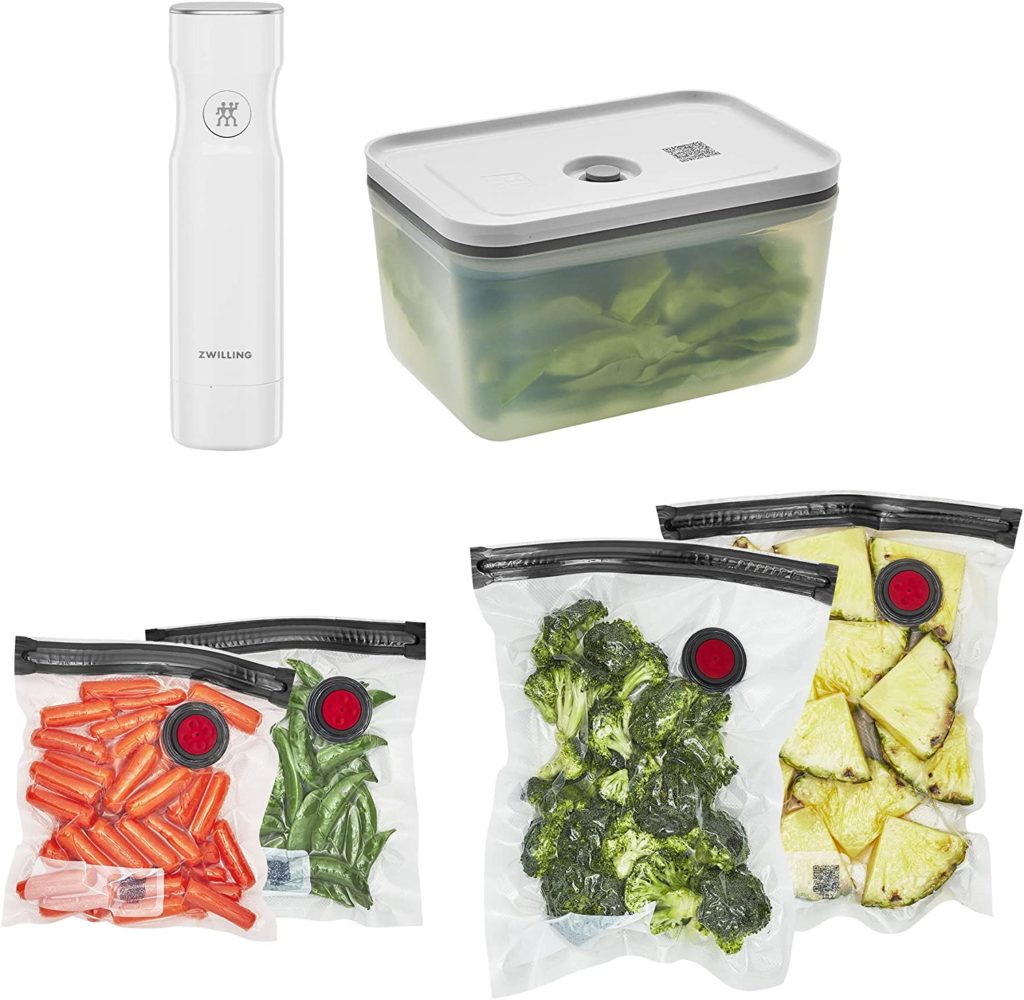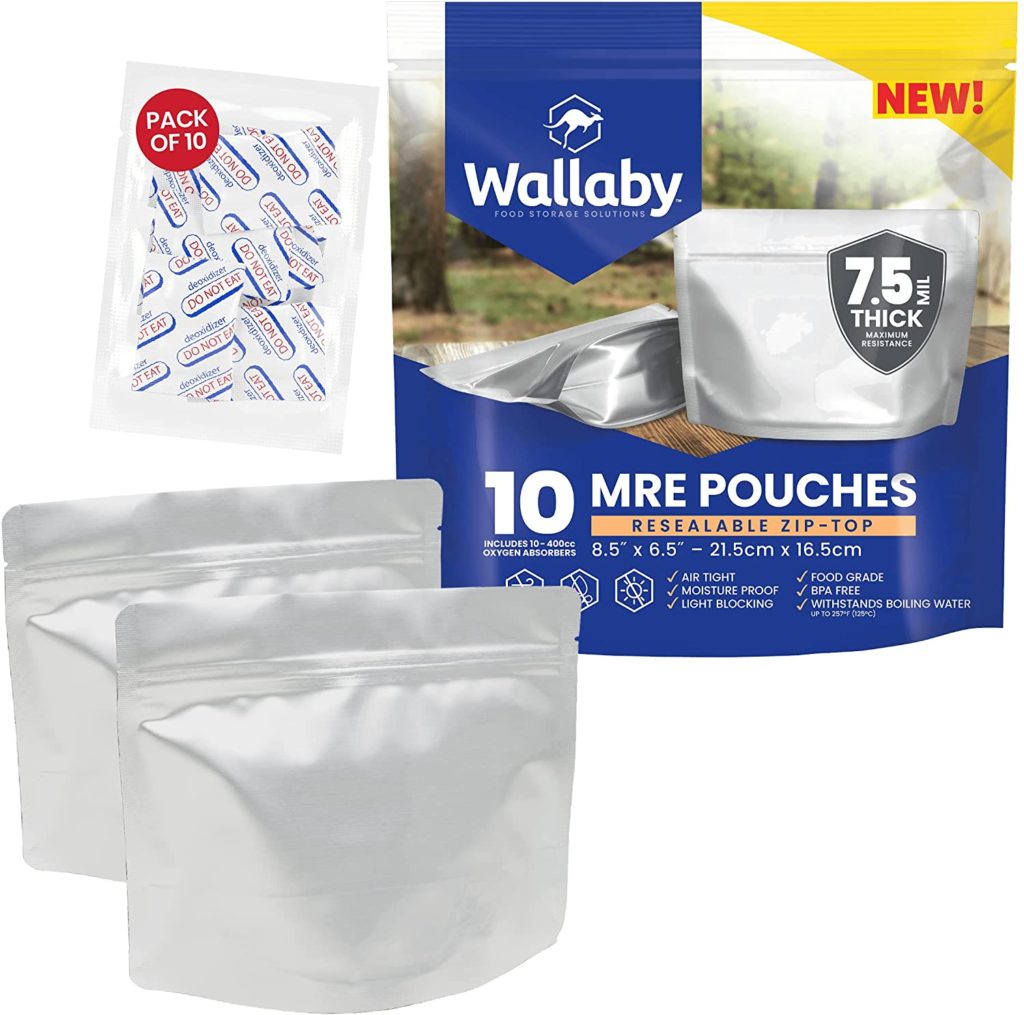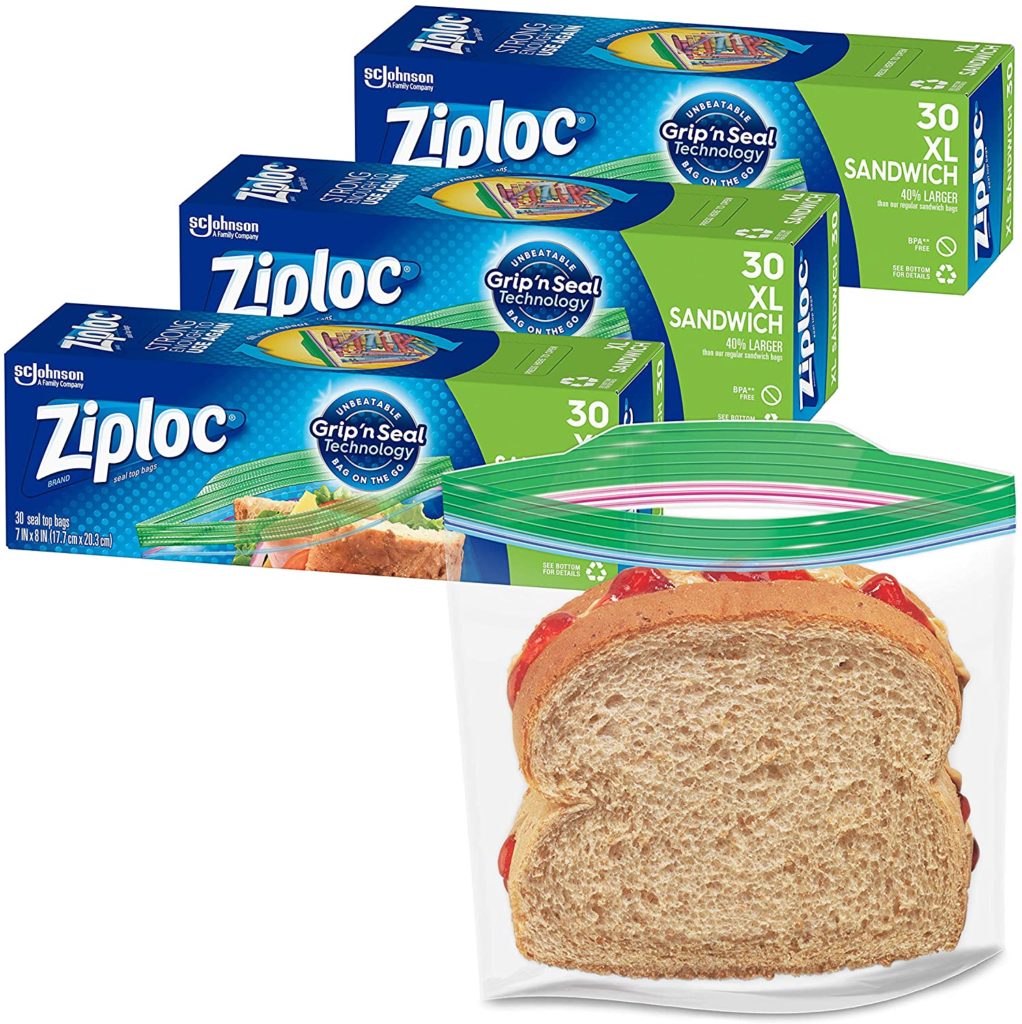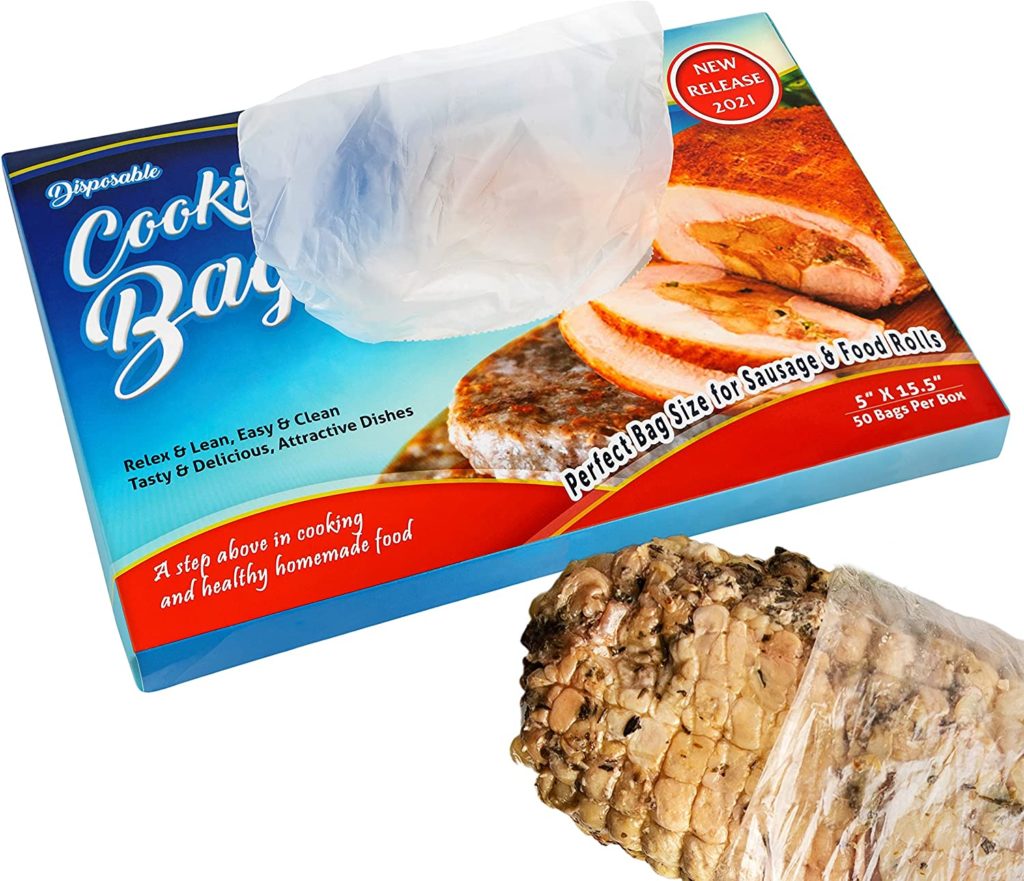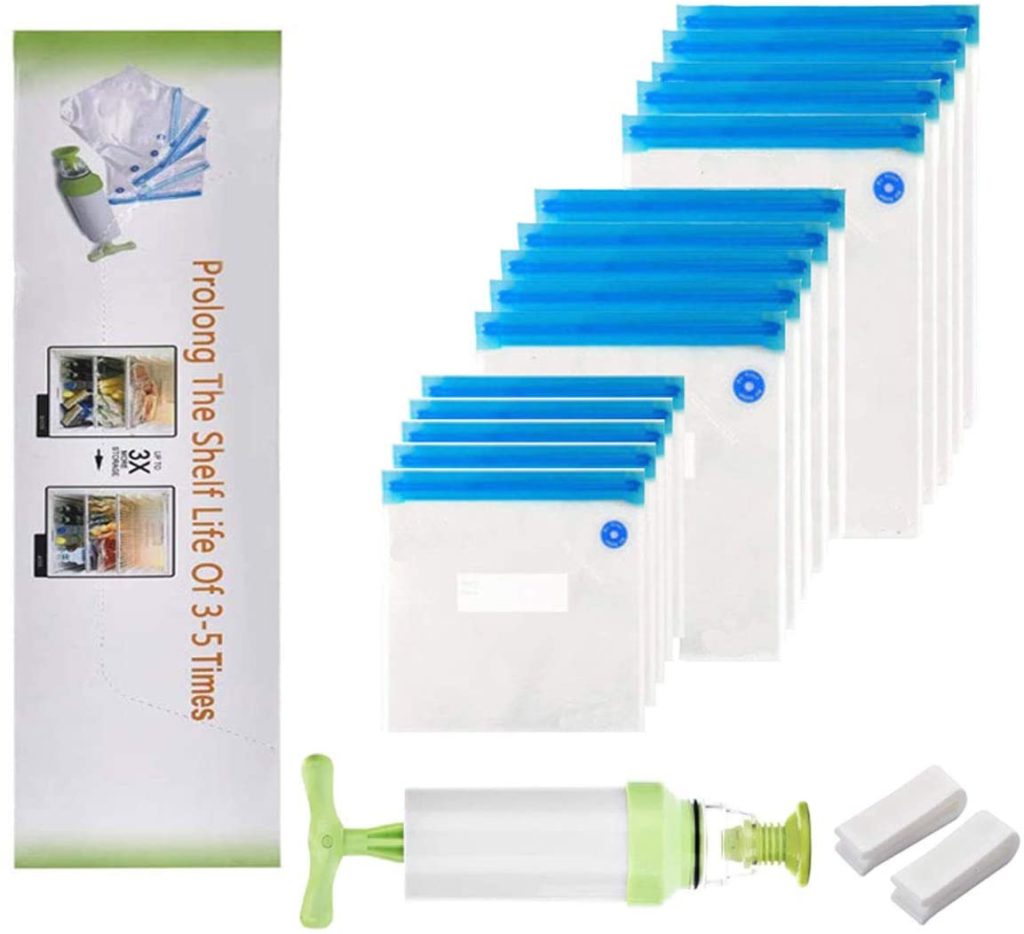Backpackers who want to cook directly in their bags will benefit from the Lekue mesh bag, which is made for blanching vegetables. The mesh bag is long and rounded, with a rounded bottom. It is safe to boil water in this bag, ranging from 230 degrees F to 410 degrees F.
It is also made from durable, clear plastic free of aluminum. Unlike standard boiling processes, it does not require you to fish out your vegetables using tongs or pour them into a colander.
What Bags are Safe to Boil in?
The safest polymers to cook with are high-density polyethylene, low-density polyethylene, and polypropylene. Thankfully, Ziploc bags and most other zippered bags are made of this material.
Will Chemicals leach into the Food?
Another concern is that the toxins in the plastic may leak into the food when heated since a study and other research prompted consumers to throw away their plastic containers.
That could be true, but it’s not as likely as it is with vacuum bags designed for sous vide cooking, which are made of the same type of plastic. For example, the Ziploc website claims that all of its bags are BPA and dioxin-free, two chemicals that most people are concerned about when using plastic.
What are Ziploc Bags Made of?
Ziploc bags are created using different materials, including plastics, inks, and dyes.
Why are Ziploc Bags Perfectly Safe for Sous Vide Cooking?
I’m known to go the cheap route whenever possible, so I used Ziploc bags instead of vacuum-sealed bags while learning to cook sous vide.
I have never had a problem with them, and they didn’t melt, burn or make me sick. Still, though, I had some lingering questions about their safety.
Too Much Air?
Some people claim that Ziploc bags don’t remove all of the air, resulting in reduced marinade penetration and, worse, bacteria growth in the food as it cooks. According to research, the temperature at which food is cooked and stored prevents bacteria development, not vacuum sealing. You can also use the water displacement method to achieve the best results if you don’t have a vacuum sealer and want to get all the air out of the bag.
Is it Safe to Put Oven Bags in Boiling Water?
Boiling or Heating
Place the food in the bag and squeeze out as much air as possible. In a pot of boiling water, submerge the bag, leaving the tied end above the waterline. As needed, turn down the heat. Remove the bag when it’s done cooking and set it aside for a minute before opening it.
BPA-free cooking bags are the best. Polyethene, high-density polyethylene, and polypropylene are the constituent materials. They are meant to withstand high temperatures without releasing harmful chemicals into the food. The best boiling bags are suggested because they may last for years and can be reused. You should avoid using Ziploc bags to store food. A good silicone bag will last for years, allowing you to save money.
Ziploc bags are ideal if you need a food bag for boiling. Polypropylene, low-density polyethylene, and Teflon are used to make them. These plastic bags can withstand heat up to 195 degrees Fahrenheit, but they will melt if heated much higher. The boiling point of water is 212 degrees F, and the heat will damage the plastic bag if it is at that temperature. As a result, a silicone bag is preferable.
How Safe are Cooking Bags for Use?
Many individuals have been taught that plastic should never be used in or near an oven. These thin plastic baking bags are designed to be used in an oven to cook meals. Approved oven bags are safe to use and will not melt, catch fire, or harm your food if appropriately used. Another popular option is the cook-in-the-bag. These cooking bags are BPA-free and are made of high-density polyethylene or polypropylene.
If you’re concerned about the safety of plastic bags, opt for high-density polyethylene bags, which are better for hot and cold temperatures. If you’re concerned about food safety, invest in a reusable silicone bag. While boiling in a Ziploc bag may seem appealing, it is not recommended for high-temperature cooking. Inhaling plastic particles is also a possibility. Consider the benefits and drawbacks of utilizing the best-boiling cooking bags. A low-cost silicone bag will suffice in place of the best-boiling cooking bags.
Conclusion
Ziploc bags are the ideal cooking bags for boiling if you’re preparing for family and friends. They are made from polyethylene, high-density polyethylene, or polypropylene. While they are suitable for boiling, they are not for high-temperature cooking. Those who have a Ziploc bag will be safer from this danger. The cooking bag has a zipper closing that makes it easier to use and a flat bottom that helps it stand up.

